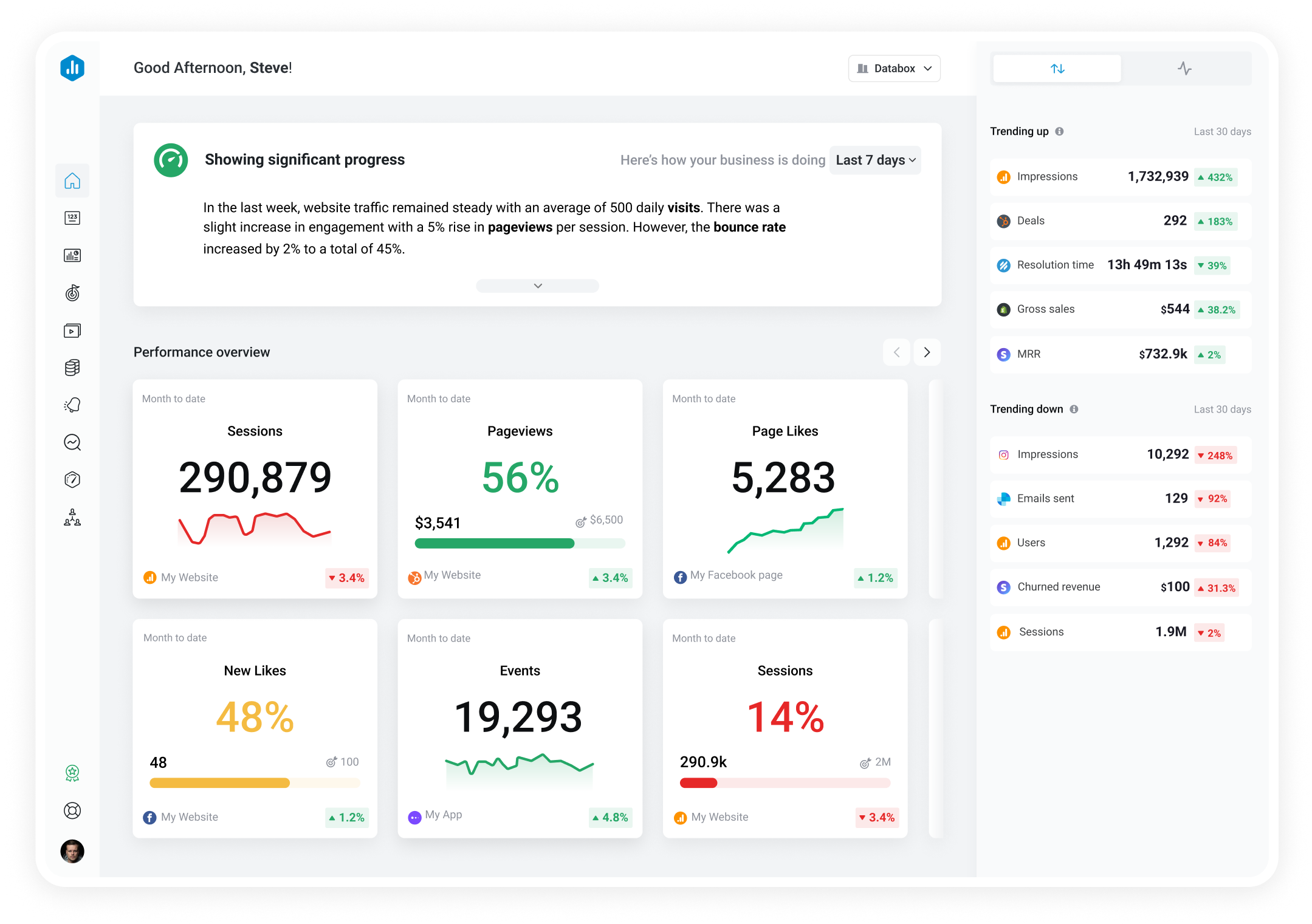Track all of your key business metrics from one screen
GET STARTED
 QuickBooks
Balance by Bank Accounts & Credit Cards (Accrual)
QuickBooks
Balance by Bank Accounts & Credit Cards (Accrual) Displays current balances from linked bank and credit card accounts in QuickBooks, providing a complete snapshot of your financial position.
With Databox you can track all your metrics from various data sources in one place.

Used to show comparisons between values.
Databox is a business analytics software that allows you to track and visualize your most important metrics from any data source in one centralized platform.
To track Balance by Bank Accounts & Credit Cards (Accrual) using Databox, follow these steps:
 Goals
Goals Scorecards
Scorecards Metric Digest
Metric Digest Metric Builder
Metric Builder Data Calculations
Data Calculations Performance Screen
Performance ScreenIn order for a Bank Account from Quickbooks to be visible in metrics in Databox, the Bank Account must be visible in the Balance Sheet report in Quickbooks under the Assets > Current Assets > Bank Accounts tree.
